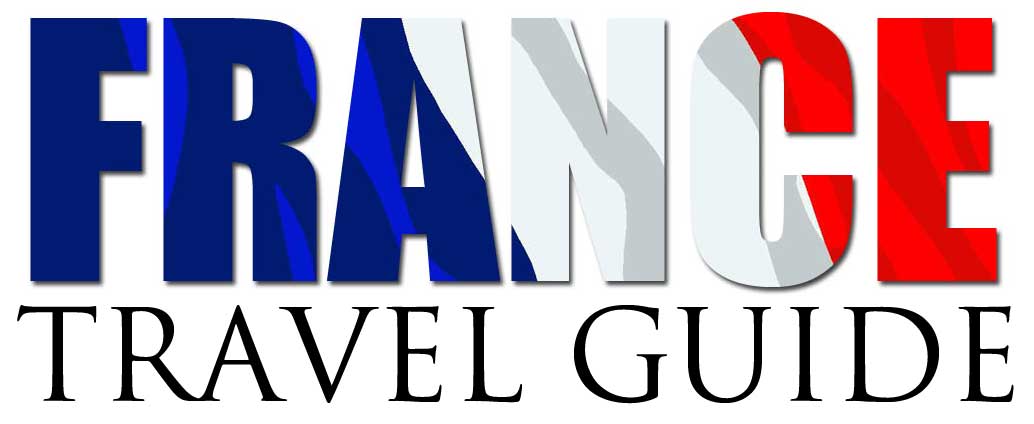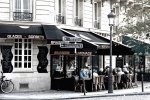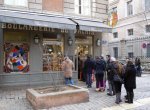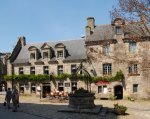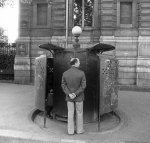limoges
department: haute-vienne (87)
region: Nouvelle-Aquitaine [limousin]
Limoges is the principal city of Limousin. The chance discovery of kaolin, a rare form of white clay, at Saint Yrieix la Perche in 1765 transformed the industry of the Limousin and Limoges in particular. Hard paste porcelain requires at least fifty per cent kaolin as a component and with its discovery in Limousin, so began an era of prosperity, virtually unhindered even by the Revolution.
Saint-Etienne bridge and cathedral in the heart of the old district of the town
© Atout France/Jean Malbure.
By the early 19th century, with the Vienne river serving as a means of importing wood for the kilns, the future of Limoges, originally founded by the Romans, was secured. Since then, more than fifty per cent of the porcelain made in France comes from Limoges and the surrounding area, rather than from one specific location. The widespread growth of porcelain and pottery production is a sign of a revival in traditional crafts that include basket-making, silk-weaving and the manufacture of musical instruments.
Inevitably, Limoges developed as an important commercial centre, and today, while extending some distance north from the river, has two key centres. Along the river is the ancient district around the cathedral, quiet, fairly compact, and with a relaxing botanical garden, restaurants and even an Irish pub. Further to the north-west is the medieval butchers’ quarter – the village de la Boucherie – if anything even more compact. This cranny of timber-framed buildings clustered around its tiny chapel dedicated to Saint Aurélien, was formerly inhabited exclusively by the city’s butchers and their families, and several of the houses still have their 19th-century shop fronts. One of them, the Maison de la Boucherie now serves as a small but informative museum about the area and its bloody trade.
Today, Limoges is a lively university town with a notable heritage, and is a place synonymous with affluence and prosperity. As a tourist trail, a circuit of its principal sights will not consume more than half a day. But with attendant visits, to its parks and ancient buildings, a few relaxing coffees and perhaps a little time in its upmarket shops and boutiques, plus lunch at one of the restaurants in the butchers’ district, and a day in Limoges will be well spent. Among its many sons is no less than the renowned artist August Renoir (1841-1919), the child of a working class family, born in Limoges, and who worked as a boy in one of the porcelain factories, where his talent for drawing led him to being employed to paint designs on china products.
Campanile and clock at Gare des Bénédictins railway station © Atout France/Jean Malbure
SEE THE SIGHTS
Gare des
Bénédictins
Should you
arrive in Limoges by train, then you are in for an immediate treat: the city's
stunning art deco station, completed in 1929, has a fine copper dome, carved
frescos and dominant copper-topped clock tower.
Musée Municipal de l'Évêché (Musée des Beaux Arts)-Musée
de l'Émail
Housed in
the former Bishops' Palace this magnificent museum displays a superb collection
of over 300 enamels (champlevé or cloisonné) by Limoges masters, while the
adjacent Jardin de l'Évêché add an air of reflection to the visit, a place
where herbs (medicinal and toxic) have been grown since medieval times.
Champlevé enamels involve pouring
enamel into grooves let into a copper surface, then polishing it level with the
metal. The Galérie du Canal, a co-operative gallery run by master enamelists,
contains a contemporary display of such works.
Cathedral Saint
Étienne
Started in
the 13th century, and dominating the Vienne valley, this Gothic masterpiece
took six centuries to complete. It is especially noted for its Renaissance rood
loft, added in 1534, and for the fine, partly octagonal, bell tower. Also of
note are the richly decorated Portail St-Jean and the beautiful Rose window.
Musée
Adrien-Dubouché
Illustrating
the evolution of pottery from ancient to contemporary times, this remarkable
collection, which includes many examples of the finest Limoges ware, is of
international importance.
Village de
la Boucherie
To the
north-west of the cathedral lies the medieval butchers’ quarter – the village de la Boucherie – a compact but
hugely fascinating area, rich as it is in the buildings that characterised the
widespread 19th-century destruction and rebuilding of the town centre,
necessary, it is said, because of its reputation for crime and prostitution.
This hidden enclave of timber-framed colombages
clustered around a pocket-sized chapel dedicated to Saint Aurélien, used to be
inhabited exclusively by the city’s butchers and their families, and several of
the houses still have the original 19th-century shop fronts. One of them, the
Maison de la Boucherie today houses a small museum about the area and its
bloody trade.
Musée de la
Résistance
Greater
Limousin was a key focal point of the Resistance Movement during the Second
World War, and this museum details the region's struggles against German
occupation, which ultimately led to the city's self-liberation in August 1944.
Aquarium de
Limoges
Certain to appeal to young children, this small aquarium in subterranean old
water reservoirs, houses over 2,500 fish.
Chateau de
la Borie
A short distance from
the city, the chateau at Solignac, is classified as an historical monument
although very little is known about its origins. It dates from the 17th
century, and is typical of the agricultural-residential Limousin estates of the
time. It is believed to have been owned, during the time of Louis XIV, by
Martial Maleden, a member of a wealthy Limousin family and Chief Treasurer of
France. Housed at the chateau is the Fondation La Borie-en-Limousin, with the
aim of developing a musical meeting place for everyone working in the fields of
music and sound: The Fondation regularly stages concerts in a wide range of
musical genres.
Limoges Bénédictins station by night © Atout France/Pierre Desheraud
TOURIST INFORMATION
Comité
Départemental du Tourisme
Maison du Tourisme, 4 place Denis Dussoubs, 87000
LIMOGES
Tel: 05 55 79 73 01
www.tourisme-hautevienne.com
For all information
before and during your visit call Tourisme Infos Limousin (Bilingual French-English
receptionists) Tel: 05 55 35 03 26 (from England), or 0 810 410 420 (in
France)
www.limoges-tourisme.com
Limoges is 245 miles south of Paris; 375 miles from Cherbourg, and 310 miles from Ouistreham (Caen).
Limoges has a central position that makes it close to other major French
cities. A few hours from Paris, Toulouse, Nantes or Lyon and other European
cities like London, Brussels or Barcelona, and less than an hour by plane from
Paris
If
your French is up to it, Pays du Limousin
magazine gives much useful information about the region, and occasionally
produces special issues on
specific topics.
getting there
By air
There are
numerous flights to Limoges International Airport from UK airports, mainly
operated by Ryanair.
By rail
There is a
direct TGV service to Limoges from Paris, with regular daily services. The
Limoges 'Bénédictins' railway station is at the heart of a 7-branch railway
network: Châteauroux-Orléans-Paris, Poitiers, Angoulême, Bordeaux,
Brive-Toulouse, Ussel (Corrèze) and Lyon.
By car
From Paris use the A10, A71 and the A20
(toll free from Vierzon); from Cherbourg drive towards Caen and take the
Péréphérique Sud, then head for Falaise, Argenton, Le Mans, Tours, Poitiers and
Limoges. From Ouistreham (Caen), drive towards
Caen and use the péréphérique to locate the road to Falaise, then as for
Cherbourg.
BEYOND LIMOGES
There is so much more to Limousin than what Limoges has to offer, from some of the most beautiful villages to large expanses of rural, rolling landscapes, heavy with peace and quiet, and perfect for a relaxing stay.
Numerous small villages dot the landscape, which is steeped in a history that extends from the time of Richard the Lionheart to the horrors of World War II.
Recent Articles
-
French Food and Drink - No BS Guide for lovers of Food, Wine, Liqueurs
Aug 28, 19 03:18 AM
Our guide to French food and drink for those who love traditional French food along with our no BS guide to understanding French wine and liqueurs
-
Things To Do In Carcassonne The Ultimate Tourist Guide
Aug 24, 19 06:26 PM
The ultimate tourist guide to things to do in Carcassonne when you visit this wonderful town in Aude France. Discover the places to go and see in Carcassone.
-
Lyon Old Town Guide to Vieux Lyon
Aug 18, 19 07:48 AM
Your complete guide to Lyon old town otherwise known as the Vieux Lyon. Don't miss this amazing part of the city if you're visiting Lyon in France.
-
18 French Villages You Must Visit Most Beautiful Villages in France
Aug 17, 19 06:31 AM
Our guide to the 18 most beautiful French villages you simply must visit. Loads of info, photos and facts in our ultimate villages in France tourist guide
-
What a Pissoir - The True Story of France's Unique Urinals
Aug 13, 19 03:47 PM
Is there anything more French than a pissoir? Sadly on the decline nevertheless the pissor is an endring image of the country. This is their story
